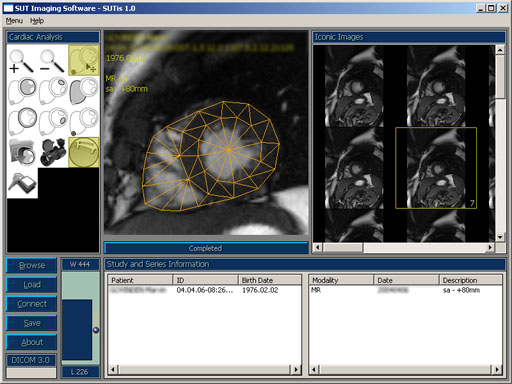Cardiac Image Analysis

During the past decades, Medical Imaging has played major roles in Computer Assisted Diagnosis (CAD) for cardiovascular diseases. With the recent advances in computational capability, imaging is now moving from being primarily diagnostic modality to therapeutic and interventional aid. Furthermore, with the recent developments in minimal access and Robotic Assisted Surgery (RAS), in line with the rapid emergence of biomechanic and heamodynamic modelling, the requirement for computational imaging has now reached the new height.
Figure 1 The SUT Imaging Suite (Freely available upon request) with a Cardiac Analysis (c) module showing an automatic ventricular segmentation procedure based on a deformable active model. The deliniated structure can then be used as a reference for many morphologic and functional assessment, e.g., cardiac output and myocardial perfusion.